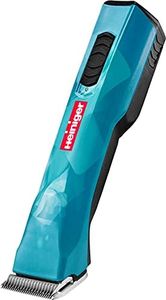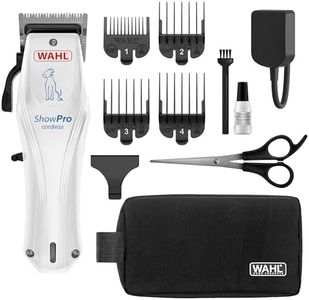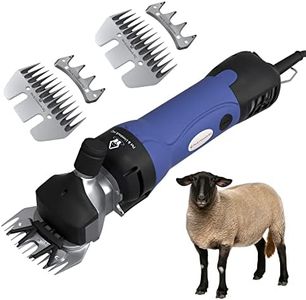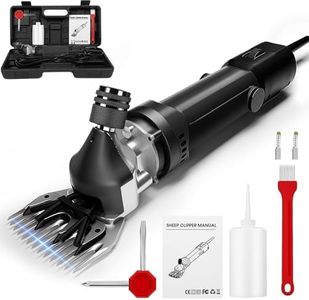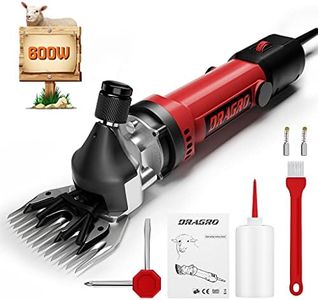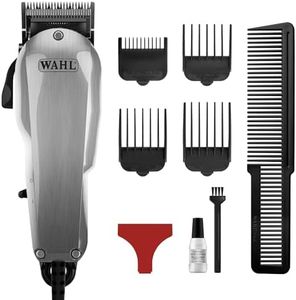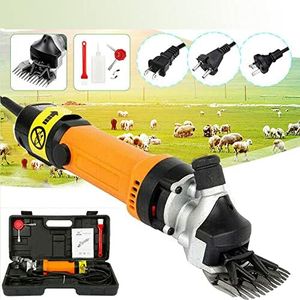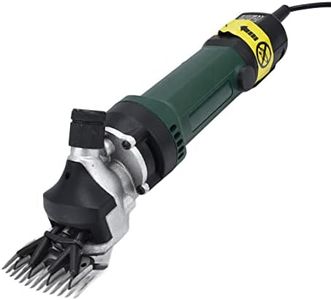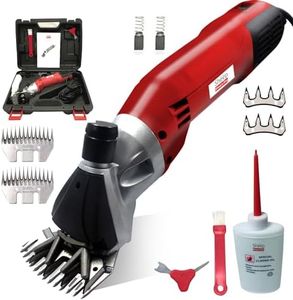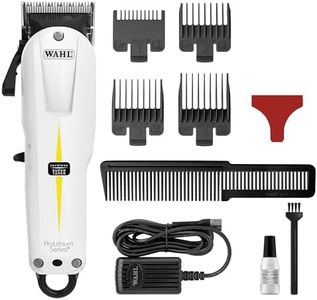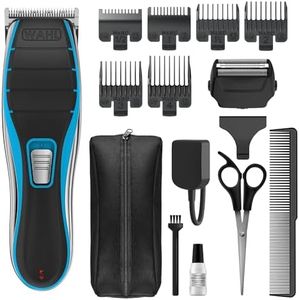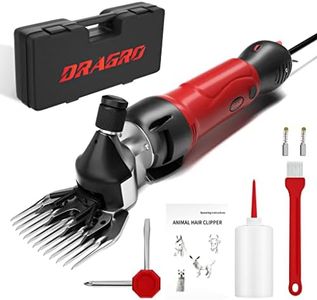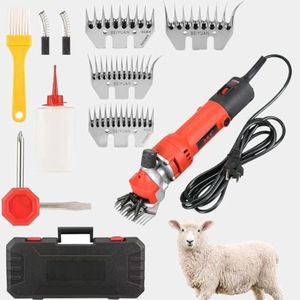We Use CookiesWe use cookies to enhance the security, performance,
functionality and for analytical and promotional activities. By continuing to browse this site you
are agreeing to our privacy policy
10 Best Sheep Clippers
From leading brands and best sellers available on the web.Buying Guide for the Best Sheep Clippers
When choosing sheep clippers, it’s important to find a tool that matches your flock size, your grooming experience, and the type of wool your sheep have. Good sheep clippers help you shear efficiently and safely, ensuring comfort for both you and the animal. The right product will make the job easier, with less strain and more consistent results. Instead of rushing for the most popular or powerful model, take some time to understand the key specifications, as these will guide you to a better match for your needs.Motor PowerMotor power in sheep clippers shows how strong and fast the clippers can cut through wool. It’s usually measured in watts. Lower wattage clippers (around 200W) are good for smaller flocks or occasional, light shearing. Medium wattage (250–350W) is suitable for medium herds or thicker wool. High wattage (400W and above) is needed for large flocks or very dense, dirty, or matted wool. Choose higher power if you have many sheep or tough, thick wool, but lower power may be enough for just a few, well-kept sheep.
Blade Type and SizeBlades come in different types and sizes, which affect how close and quickly you can shear. Fine-toothed blades offer a close, smooth cut and are good for finishing or shearing soft, clean wool. Coarse blades are better for tough, long, or dirty fleece. Wider blades cover more area and make shearing faster for large flocks, while narrower blades give more control for delicate shearing or detail work. Choose based on your sheep’s wool type and your skill: wide and coarse for speed on thick wool, fine and narrow for control on small jobs.
Speed SettingsSpeed settings control how quickly the blades move. Single-speed clippers are easy to use and work well for beginners or simple jobs. Multi-speed clippers let you adjust for different wool conditions: slower speeds for careful trimming and higher speeds for faster shearing. If you’re new or only have one type of flock, single-speed might be enough, but multiple speed settings give more flexibility as you get more experience or work with different wool.
Weight and ErgonomicsWeight and ergonomics refer to the comfort and balance of the clippers in your hand. Heavier clippers may tire your arms if you have lots of sheep or need to shear for a long time, but they can be more durable. Lighter models are easier to handle and better for detailed work. Comfort also depends on grip design, noise, and vibration. If you shear often or have a big flock, prioritize comfort and lighter weight; if it’s only occasional use, weight may be less important.
Cooling SystemSheep clippers can get hot with extended use, which can be uncomfortable or even dangerous for your sheep. Some clippers have built-in cooling features, like venting or fans. Better cooling is important if you shear a lot of sheep at once, because it keeps the clippers working and safe. For small jobs, clippers without advanced cooling may be fine, as you’ll have time to let them cool between uses.
Maintenance NeedsSome clippers are easier to clean, oil, and maintain than others. Quick-change blades and easy access for cleaning make upkeep simpler. If you’re not experienced, or want less hassle, look for models designed for easy maintenance. If you’re comfortable doing more detailed cleaning or blade sharpening, this may matter less.
Corded vs CordlessCorded clippers plug into an outlet, giving constant power and making them best for large jobs or when you have access to electricity. Cordless clippers run on batteries, which means you can use them anywhere, but you’ll be limited by battery life. Corded is better for extensive or heavy-duty shearing, while cordless is great for portability and small flocks.

